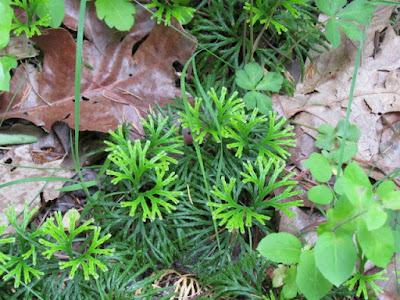Fall brings wiener roasts, festivals, and leaf removal. I suggest making good use of the fallen leaves in your yard.
The tree leaves that accumulate in and
around your landscape represent a valuable natural resource that can be used to
provide a good source of organic matter and nutrients for use in your
landscape. Leaves contain 50 to 80 percent of the nutrients a plant extracts
from the soil and air during the season. Therefore, leaves should be managed
and used rather than bagged or burned. According to Rhonda, there are four
basic ways in which leaves can be managed and used in the landscape.Ginkgo in Fall
First, a light covering of leaves can be mowed. Simply leave the shredded leaves in place on the lawn. This technique is most effective when a mulching mower is used. In fact, during times of light leaf drop or if there are only a few small trees in your landscape, this technique is probably the most efficient and easiest way to manage leaf accumulation.
Second, mulching is a simple and effective way to recycle leaves and improve your landscape. Leaves can be used as a mulch in vegetable gardens, flower beds and around shrubs and trees. Leaves that have been mowed or run through some other type of shredder will decompose faster and are much more likely to remain in place than complete leaves. I use a chipper shredder vacuum to pick up my leaves, which I use instead of purchased mulch in my landscape beds.
Third, leaves may be collected and worked directly into garden and flowerbed soils. A 6 to 8 inch layer of leaves tilled into a heavy, clay soil will improve aeration and drainage. The same amount tilled into a light, sandy soil, will improve water and nutrient holding capacity. A recommended strategy for using leaves to improve soil in vegetable gardens and annual planting beds is to collect and work them into the soil during the fall. This allows sufficient time for the leaves to decompose prior to spring planting. Adding a little fertilizer to the soil after working in the leaves will hasten their decomposition.
Finally, try composting your leaves. Compost is a dark, crumbly and earth-smelling form of organic matter that has gone through a natural decomposition process. If you have a garden, lawn, trees, shrubs, or even planter boxes or houseplants, you have a use for compost.
Get extra value out of your leaves this fall. And for fun, don’t forget to jump in the pile once!
Watch my video on Fall Leaf Management.
Published as New Release on 10-6-2014










